All dogs want to be as popular as the German Shepherd dog breed. They’re one of the most popular dog breeds in America. Being so popular helps them come in many different colors.
One of the most unusual German Shepherd colors is the liver colored German Shepherd.
The liver German Shepherd is a variation of the traditional black & tan German Shepherd dog. These liver-colored coats are a result of a recessive gene, and it makes these dogs different from other German Shepherds.
Still, the differences are only visible by the eye. Liver colored GSDs are still as loving, loyal, hardworking, and smart as any other German Shepherd.
But, are there any major differences about liver GSDs that future owners should know about? Yes, and you’ll learn about them, too, if you scroll down and jump into the puzzling world of liver German Shepherds.
What Is A Liver German Shepherd?
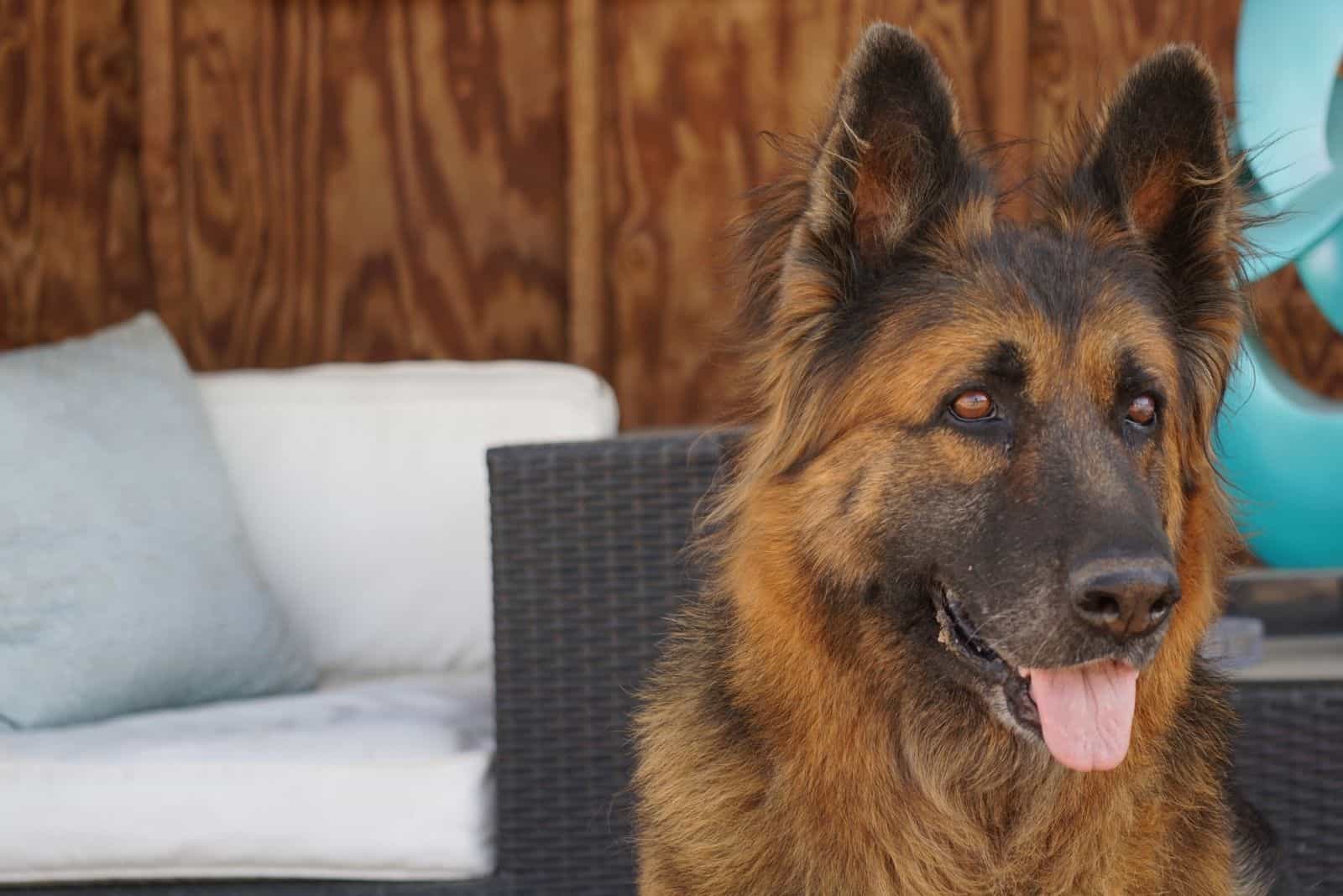
As we already mentioned, the liver German Shepherd is a variation of the traditional black and tan color option for German Shepherds. Liver German Shepherd dogs have distinct coloring on their nose, eyes, and fur. Some dog lovers even argue whether the color is more of a light brown than liver.
These dogs are considered dilute types because of their recessive genes which dilute the black color to make the coat a lighter brownish color.
The liver German Shepherd has an average lifespan of 9 to 13 years.
The males are always bigger than females, weighing 66 to 88 pounds, and standing tall at 24 to 26 inches. The female liver GSDs are around 72 to 75 pounds, and 22 to 24 inches tall.
It’s always possible to find larger liver German Shepherds as well as to find miniature ones due to dwarfism and questionable breeding history.
No matter which size it has, the liver GSD has a double coat. The topcoat is wiry and protects the dog from bad weather, insects, and other external factors. The inner coat is soft and lush, serving as terrific isolation against cold and hot weather. Unfortunately, for those prone to allergies, liver German Shepherds are big shedders all year round.
They even shed heavily in-between seasons.
What Causes The Liver Color In Liver German Shepherds?
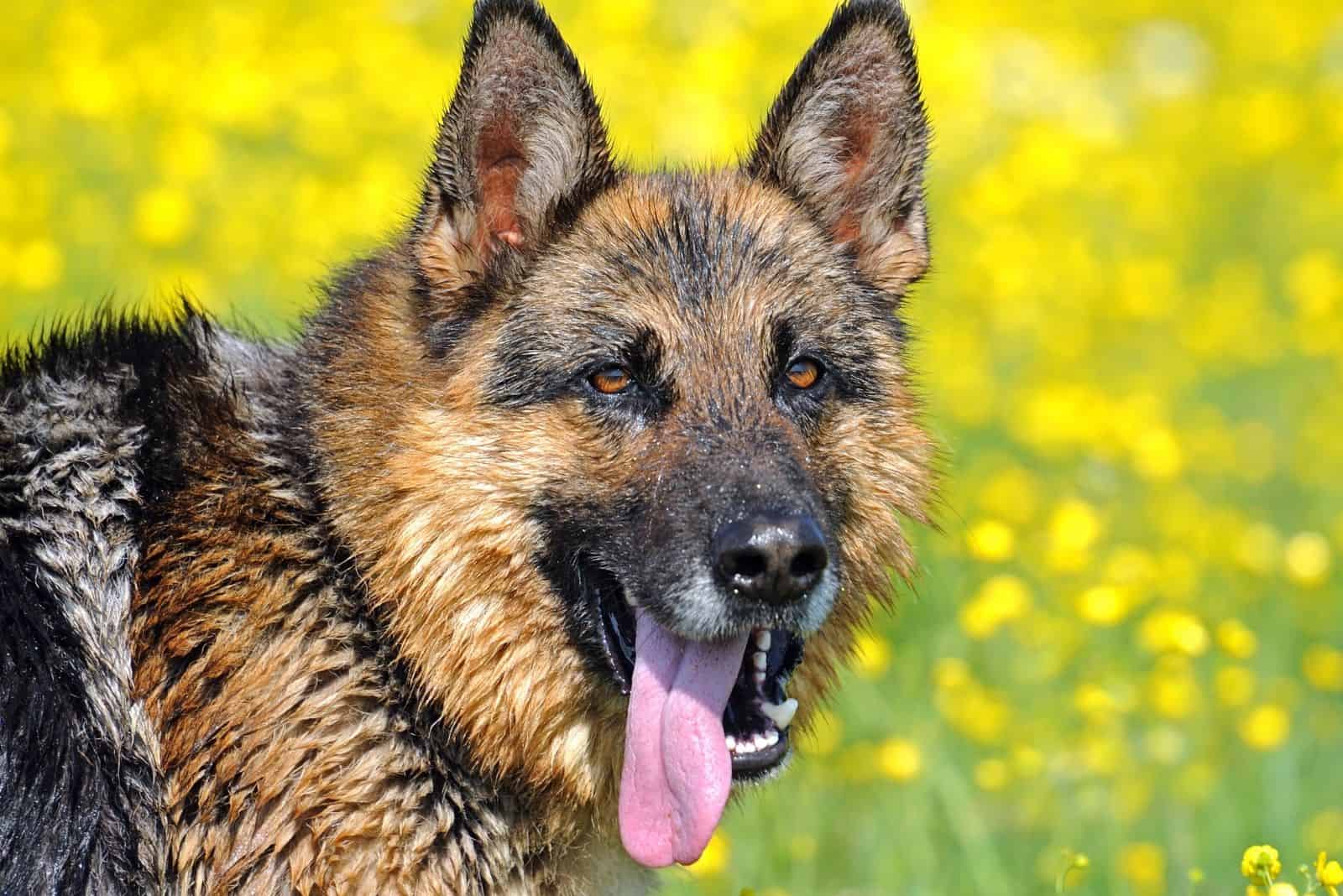
The liver color in Liver German Shepherds is caused by a recessive gene called the B Locus. For a German Shepherd puppy to be born liver, both parents need to have and to pass on at least one liver gene in its genetic material.
Usually, one or both parents don’t have the liver gene presented, but they both have the recessive B locus gene. The B locus recessive gene blocks black pigmentation in the GSD coat coloring. Any German Shepherd with the recessive B locus gene will not have black fur.
B-locus is a tyrosinase-related protein, which means that it plays a big role in the synthesis of the eumelanin pigment.
Eumelanin makes the dog’s coat appear black. The B locus gene suppresses the eumelanin pigmentation in order to stop black skin or fur production.
When the puppy has two copies of the gene, it will be named homozygous for the mutation from both parents. In other words, the puppy’s coat will be reddish-brown.
The second gene decides how a liver GSD will look in other ways; for example, the fur pattern and markings, as well as color distribution across the whole body.
The gene determines whether the German Shepherd puppy will be a bi-color or a solid color.
Common coat patterns for GSDs include:
• Solid pattern
• Bi-color pattern
• Saddleback pattern
• Blanket back pattern
What Color Do Liver German Shepherd Puppies Come In?

Adult Liver Shepherds are usually consistently solid brown in color all over their body.
However, the puppies have fur and skin in liver, but their toenails are white and their footpads are pink.
As the puppy grows older, the toenails and footpads will change color into liver. Also, liver German Shepherd puppies are born with green or blue eyes. The eye color will change to a reddish-brown hue at around 6 months old.
Bi-color Liver Shepherds may experience color changes until around 2 years. This is the time when the color permanently sets.
A liver German Shepherd puppy will double its birth size in the first week, and weigh around 16 to 19 pounds by the time it is 2 weeks old.
The liver Shepherd puppy will gain 5% to 10% in size every month for the first 12 months, and will reach sexual maturity at 2 or 3 years old.
Blue Liver German Shepherd
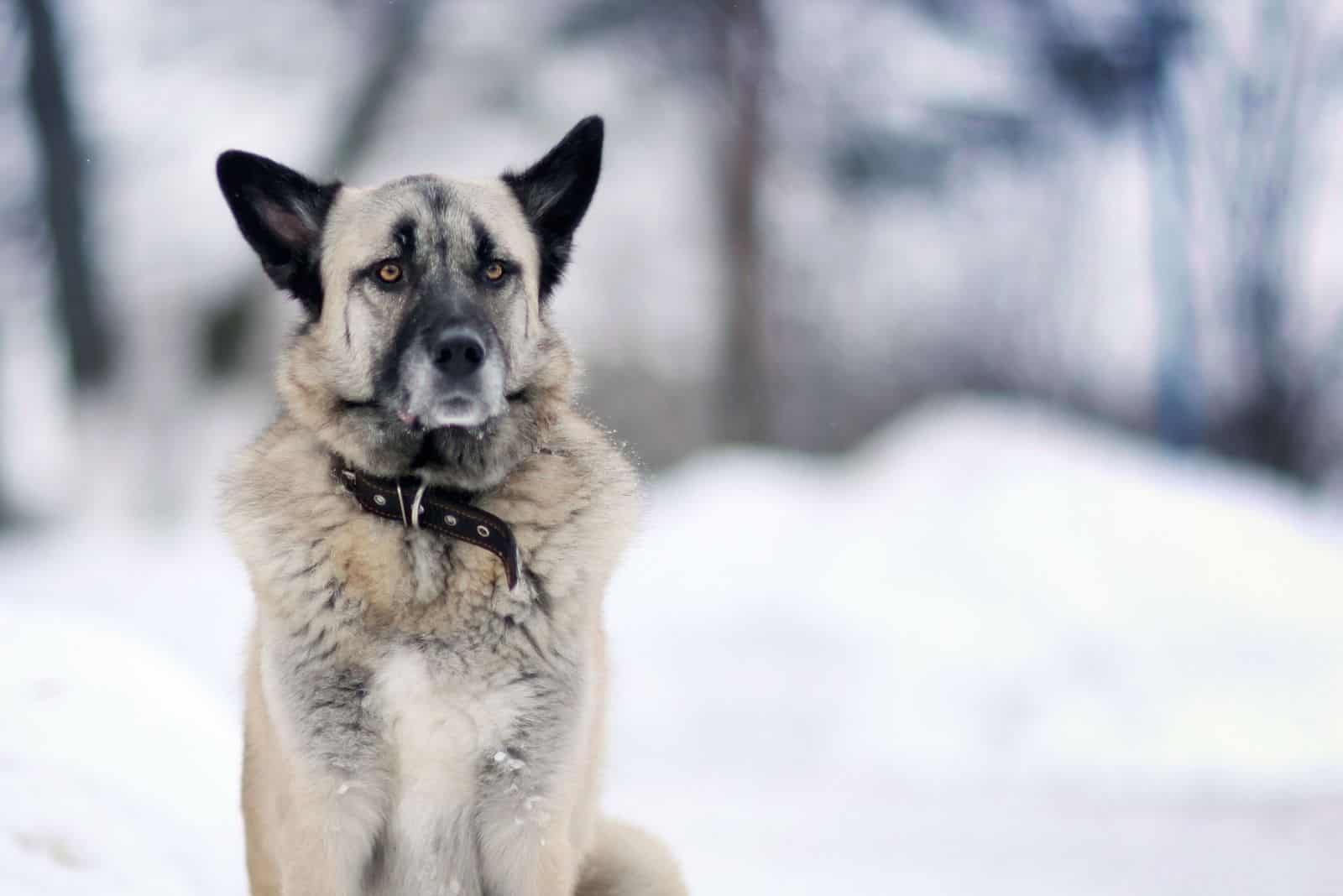
Blue liver German Shepherds are not a result of breeding crosses, but a simple recessive allele.
We have here the dominant allele D that determines that the pigment is not diluted, no matter what the coat color is.
Then, we have the d allele, which determines the dilution as in the color, blue.
There are German Shepherds that have DD with normal pigmentation, and also Dd with normal pigmentation, but carriers of dilution (which then can pass it on to offspring if crossed with another Dd carrier), and finally manifesting dd dilution.
Many people mistake them for “Grisons”, a grey and tan GSD. But, there are those that lack pigment, and are considered faulty and disqualifying by the AKC and the FCI.
Does The Locus Gene Affect The Dog’s Temperament?
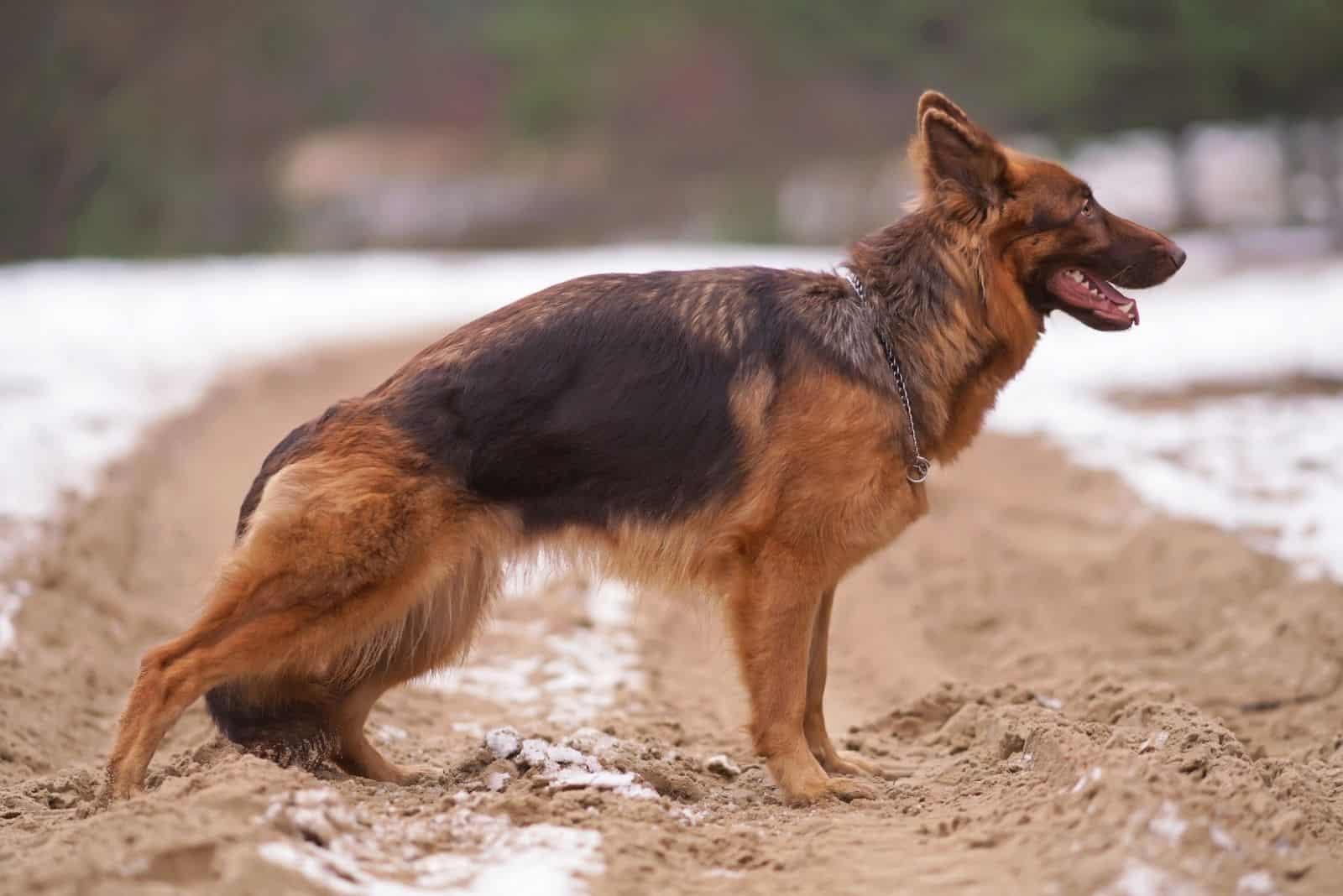
Actually, no! The B locus gene only affects the coat coloration. The recessive genes don’t affect temperament or any other German Shepherd characteristic.
So, what are liver German Shepherds like?
The liver GSD is a loving and loyal dog that puts your safety first. They’re especially fond of kids, and they mostly attach to the lady of the house.
Liver German Shepherds are generally wary of strangers or strange animals they haven’t met before. They need time to make their judgment, but once they do, they will consider that specific someone a forever friend.
Just like all other dogs, a liver GSD’s temperament can be the result of how humans and other dogs treat him. Early socialization significantly affects the dog’s future life, even more than the dog’s genetic makeup!
Are Liver Color German Shepherds Prone To Health Problems?

Like all other GSD lines, the liver German Shepherd is a strong and healthy dog. They have muscular bodies, with a strong, straight back.
These dogs have excellent physical abilities, and are often bred for sports, agility shows, and law enforcement.
There are no scientifically proven health risks associated with the B locus gene or the dog’s liver color.
However, like all the other German Shepherds, the liver Shepherd went through many unethical breeding programs during the early days of standardization.
Liver Shepherds still face some health issues since they’re large working dogs.
Although there are no health problems associated with the b locus gene, liver German Shepherds are prone to the following diseases:
• Hip dysplasia
• Elbow dysplasia
• Gastric Dilatation-Volvulus (GDV)
• Epilepsy
• Hemophilia
• Diabetes
• Degenerative disc disease
• Nose infections
• Dental health problems
Is A Solid Liver German Shepherd A Good Family Dog?
Like most other GSDs, liver Shepherds are great companions, watchdogs, service and emotional support dogs, guards, as well as livestock guardian dogs.
They have high energy levels, sharp brains, and an eagerness to make the owner proud. Generally speaking, all German Shepherds are aloof with strangers and won’t let people pass by easily.
They’re loyal to their families and very protective of their “pack members”.
Liver GSDs are just as good at working as well in sports arenas as other dogs. They’re highly athletic and have an impressive running speed, with a top speed of around 30 mph.
Which GSD Breeds Are Similar To Liver German Shepherds?

Liver Shepherds are different from most red dog breeds like the Australian Kelpie or the American English Coonhound. Still, the Liver German Shepherd has many similarities with the Isabella German Shepherd.
The Isabella GSDs have a fawn color, and are commonly called dilute livers or double dilutes.
The liver Shepherd carries one recessive gene, while the Isabella carries two copies of the blue recessive gene in addition to two liver gene copies.
With the Isabella dogs, the liver gene prevents black pigmentation. The blue recessive gene dilutes the remaining brown color and results in a light brown coat, with a pink, grey, or liver nose.
Speaking of genetics, liver Shepherds have a lot in common with blue German Shepherds. Both are rare colors, and are considered faulty by the American Kennel Club (AKC).
Both colors are the results of recessive genes. Unlike dominant genes which can be passed on by only one parent, recessive genes have to be present in both parents in order to be passed on to the offspring.
Is The Liver German Shepherd A Recognized Breed Standard?

Photo from: @athenajade.gsd
People who believe dog breeds should be pure claim that the German Shepherd dogs should only be bred to standard. Technically speaking, there are only five lines of GSDs:
• North American and Canadian show line GSD
• West German show line GSD
• West German working line GSD
• East German/DDR working line GSD
• Czech working line GSD
When kennel clubs classify dogs as faulty, it doesn’t mean that the dogs are not purebred. It only means that they don’t match conformation standards.
Coat type and color are one of many criteria considered by the AKC. Other considerations include inherited diseases, genetic health, appearance, and agility.
According to the American Kennel Club (AKC), the ideal German Shepherd dog should have a double coat of medium length. They favor dogs with strong rich colors. Pale and washed-out colors like liver are considered serious faults, but they’re still not disqualifying.
Only white German Shepherds get disqualified since pale color may be a sign of genetic weakness.
There are three main liver color variations in Liver German Shepherds:
• liver and tan
• liver and white
• solid liver
The Federation Cynologique International (FCI) emphasizes breed history over any color.
In conclusion, both the AKC and the FCI recognize the liver German Shepherd.
Liver German Shepherds As Competition And Working Dogs

The solid liver German Shepherd may participate in dog shows, but other liver colors may not since they’re considered a fault.
Besides competing in aesthetic shows, liver Shepherds usually compete in sports, and are used as working dogs for their good working ability.
Here are the roles that liver German Shepherds usually obtain:
• Search and rescue
• Law enforcement
• Military
• Detection
• Nose work
• Tracking
• Herding
• Guard work
• Acting and entertainment
• Guide dogs
• Therapy dogs
In sports, the Liver Shepherd can participate in:
• IGP or Schutzhund/IPO
• Agility
• French ring or Mondio ring
• Disc sports
• Dock diving
• Lure coursing
• Protection sports
• Weight pulling
• Flyball
Pros and Cons Of Having A Liver German Shepherd
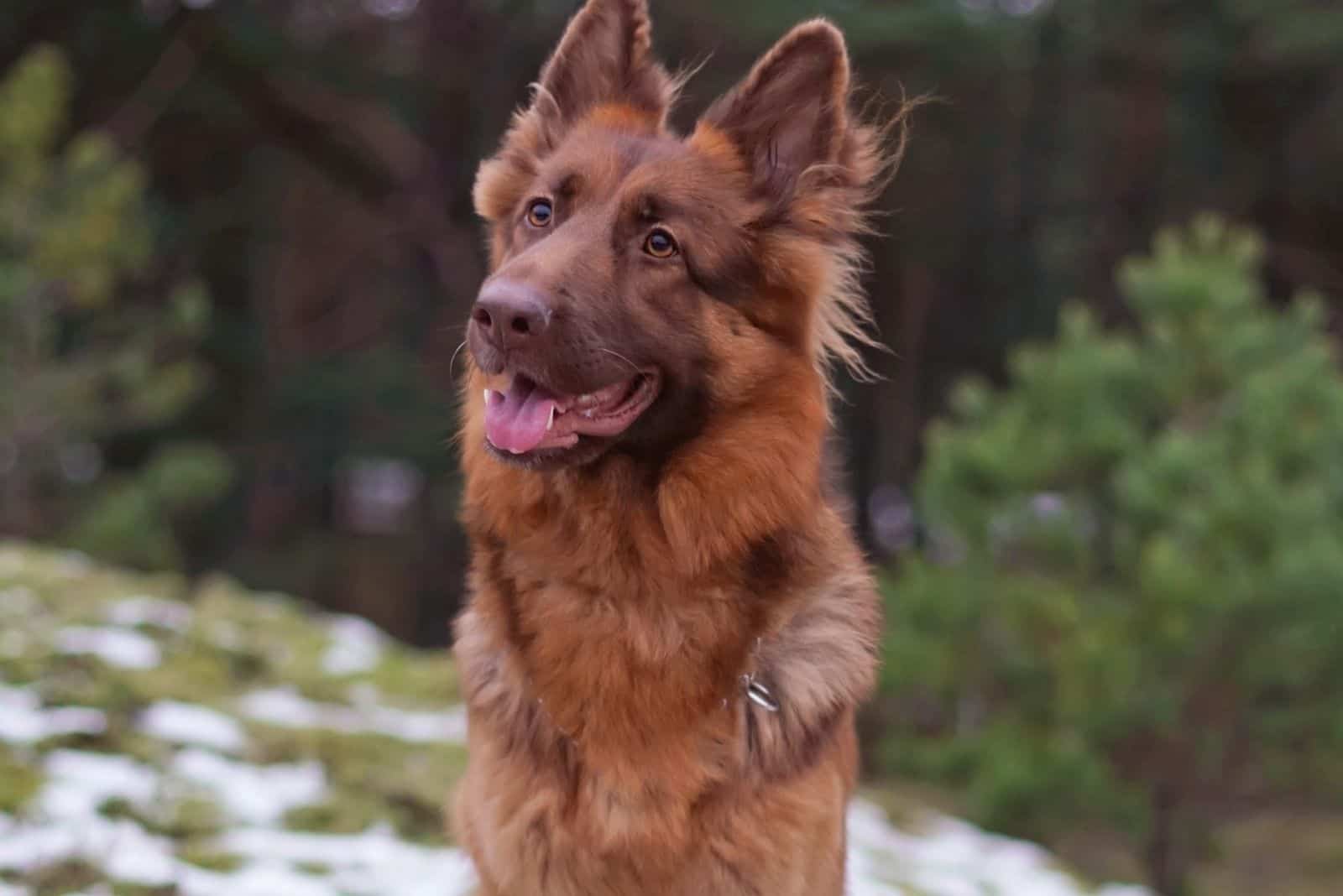
Every dog owner must be aware of the liver Shepherd’s many pros and cons. They are terrific family additions, but will all their traits suit your lifestyle?
Pros
• They are athletic and handsome
• Unique looks make them stars of every dog park
• They are highly intelligent and easy to train
• They love challenges and physical activities
• They’re loyal to their owner and close family members
• They may look intimidating and can scare away strangers and imposters.
Cons
• Some kennel clubs will disqualify liver Shepherds from shows since there are judges who consider liver Shepherds not up to breed standard.
• Their high energy is also their flaw since they need much exercise and attention; otherwise, they’ll turn to destructive behavior.
• German Shepherds need careful socialization or they may become difficult to train.
• They’re sometimes aggressive to non-family members and strangers, thanks to their extreme loyalty.
• They shed all the time!
Where Can I Get a Liver German Shepherd Puppy?

Liver Shepherds are quite rare. As such, you will not have much luck in finding one in your local dog shelter.
However, it doesn’t hurt to keep on looking. The best option to get a liver GSD is to buy one.
But, you need to know from whom you can buy healthy liver German Shepherds.
We can’t stress enough: don’t buy from backyard breeders or puppy mills!
There’s no way to prove that these breeders are responsible or whether they look into health issues and genetic disorders. Backyard breeders often don’t even have clear records on the ancestors or even the general profile of that dog line.
If you want a high-quality and healthy liver Shepherd, you will need to find a breeder registered by official authorities. Puppies from these breeders cost from $500 to $1,500.
Adopting is, of course, always cheaper, from $50 to $500, which covers adoption fees, spaying, neutering, and vaccinations. However, you need to be lucky enough to find a liver German Shepherd in a shelter.
Taking Care Of A Liver German Shepherd

Liver Shepherds need constant physical and mental stimulation. They get bored easily, and become anxious if left alone for too long.
If you must leave them on their own, then you need to make sure they’re well enclosed since they’re quite the escape artists. German Shepherds can even jump over fences as high as 5 feet in the air, and even burrow under the ground up to a few feet.
To curb boredom, leave them with fun dog toys and puzzles that will keep them entertained an mentally stimulated for hours.
We’ve already mentioned that the GSD has a double coat that is prone to severe shedding. You will need to invest in a good slicker brush and deshedding tools to groom German Shepherds properly. Hop on Amazon to find good deals!
Liver German Shepherds require brushing two or three times a week to avoid matting.
What Does A Liver German Shepherd Eat?
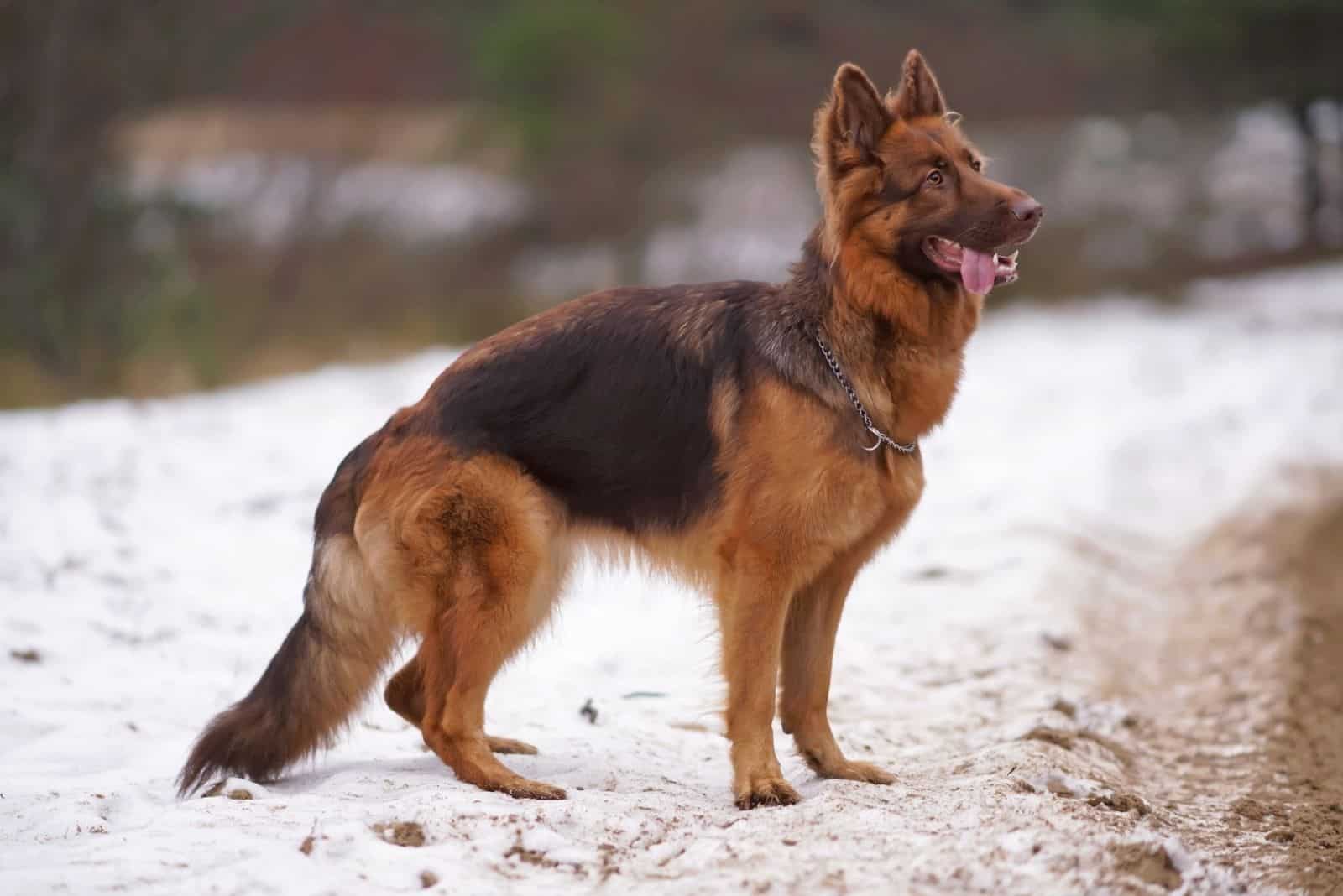
Feeding your German Shepherd depends on your dog’s nutritional needs, activity levels, and what you have available. You will need to ask for professional advice from your vet depending on the dog’s age, gender, and activity.
Usually, German Shepherds are advised to eat 3 to 7 ounces of high-quality dog food.
Puppies need to be fed two to four times a day. Some dog food brands have special formulations for dogs under 15 months of age. At 15 months, you will need to switch from puppy food to adult dog food.
If your liver German Shepherd weighs over 60 pounds, you will need to feed it once or twice a day. Depending on their appetite, body size, and activity, an adult liver Shepherd will eat three to five cups of dog food a day.
Of course, liver Shepherds at special stages in life will need a special diet, too. We’re talking about senior dogs, breastfeeding moms, and pregnant females that need extra nutrients.
Liver German Shepherds are big dogs with a high calcium requirement, unlike smaller dog breeds. You may need to add supplements like glucosamine, chondroitin, and MSM to improve their joints.
Just like their name says, liver Shepherds love liver… meat, in general, too! They especially enjoy liver treats, but the amount of treats given in a day should not go over 10% of their daily food intake.
Besides food, liver Shepherds will need at least 50 ounces of drinking water a day to obtain good health. More active dogs will need over 90 ounces, so make sure there’s always plenty of water bowls around the house.
What dogs should never have are some human foods that can even be toxic for dogs in a certain amount:
• chocolate
• hummus
• and junk food like Doritos, chips and salsa, Vienna sausages, spam, etc.
Training A Solid Liver German Shepherd

Training is an opportunity to bond with your German Shepherd and teach them a thing or two. It’s also a way to make them learn through play.
As the German Shepherd owner, you need to be a strong pack leader and a patient guide. Positive training methods and consistent exercise will help you through the training process.
The good thing is that German Shepherds are highly intelligent dogs… one of the top three most intelligent dog breeds. They take instructions well, and have good memory retention abilities.
However, liver Shepherds usually lack the ideal attention span for any advanced training when they’re under 2 years old. But, the puppy’s basic training can start at just a few weeks old.
Some basic training lessons you should start as soon as possible include:
• Potty training
• Socialization with humans and other dogs
• Socialization with other animals
• Obedience training and simple commands
• Crate training
• Leash training
Final Thoughts

Despite being one of the rarest German Shepherds, the liver German Shepherd is a natural color within the GSD color gene pool.
Even though some kennel clubs dismiss liver-colored dogs as being faulty, there are no proven health or temperament issues associated with b-locus genes, which are responsible for the coat’s liver color.
Liver German Shepherds are a pleasure to own. These are smart pups that are very hard-working and lovely to look at.
Still, they require some sacrifice in terms of considerable time and financial commitment. Since they’re heavy shedders, you will have your hands full with deshedding combs and brushes.
Also, their high energy may not suit everyone, but if you’re an active person yourself, you will enjoy the company of the gorgeous liver German Shepherd on your morning jog.
Read Next: German Shepherd Eye Colors: What Are The Variations?
